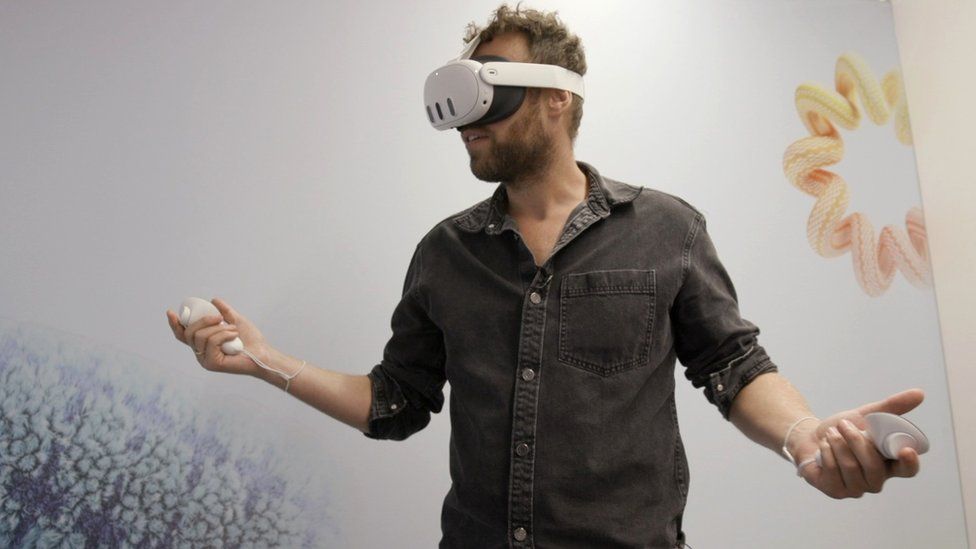Can Meta’s new VR headset stop me feeling sick?

The first time I tried VR I went for a rollercoaster game – and almost instantly regretted it. I suddenly felt sick, ripping off the headset – but the feeling of nausea stayed with me for hours.
I’d made a rookie error: starting out with an intense game that triggered motion sickness. The disconnect between what my eyes saw and my body felt was too much.
I’ve since found that I can play gentler, less disorientating games, but the nausea still begins to creep in. Unanchored in my surroundings, I begin to feel lightheaded; a dull ache develops behind my eyes. I start to feel hot – it’s time to stop playing.
Sickness in VR affects a lot of people. But finding a solution is critical if Mark Zuckerberg wants to create a metaverse that people spend serious time in.
“The biggest issue that people report is still this feeling of motion sickness,” he said last year, “but it’s getting better”.
So, last week I tried Meta’s latest headset, the Quest 3, which is about to launch.
Unlike the Quest 2, its cameras let you see through the headset to the real world in full colour. That means games can be played virtually, but set in your physical surroundings. Think of a digital character sitting on your coffee table and you’ve got the idea.
This isn’t the first “mixed reality” headset, but it is the first affordable(ish) one – at $499 (£411).
So I strapped on the headset and waited for the sickness.
I started off with a showcase for the tech called First Encounters. It starts in the room I’m standing in. As I shoot projectiles, the walls begin to crumble, revealing a virtual world that I can peer into. Small green furballs begin to jump at me.
Now, I can’t say this game was my kind of thing – but I didn’t feel sick at all.
I could see people in the room as I was playing, and see the walls. I could move around in my surroundings confidently. The same held true as I tried Stranger Things – a mixed reality game version of the hit Netflix series.
I didn’t feel sick.
After my demonstration I had a chat with Chris Cox, chief product officer at Meta, and asked him what his favourite thing about the new headset was.
The mixed reality, he said, “changes drastically how comfortable the experience is”. His team knows “context switches” – from reality to VR – “can be tough”.
But here’s the thing: if the solution to solving VR sickness is to avoid playing full VR – is that really a fix?
Zuckerberg thinks motion sickness can be reduced with better graphics and less latency (the delay between doing something and seeing it on the headset). He hopes that the better the headsets get, the fewer people will report problems.
But part of feeling ill is based simply on your eyes seeing things that the rest of your body isn’t experiencing.
So I had a go at a completely virtual reality boxing game. I pulled the headset over my eyes, and suddenly my surroundings were gone.
I played for a few minutes, punching imaginary targets. The graphics felt crisper – light-years ahead of earlier models. But for me, it’s still not enough. I didn’t feel sick, but an unwanted dizziness began to creep over me – my brain still telling me that it’s not enjoying the experience.
As Zuckerberg acknowledges, people experience motion sickness differently. Some people get sea sickness, and some don’t. Some people play VR for hours on end without a problem.
But I can’t.
Mixed reality is still very new, with few games. But maybe it’s the solution for people like me who like the idea of playing games virtually – but haven’t the stomach for it.
Related Topics
-
-
17 March 2022

-


